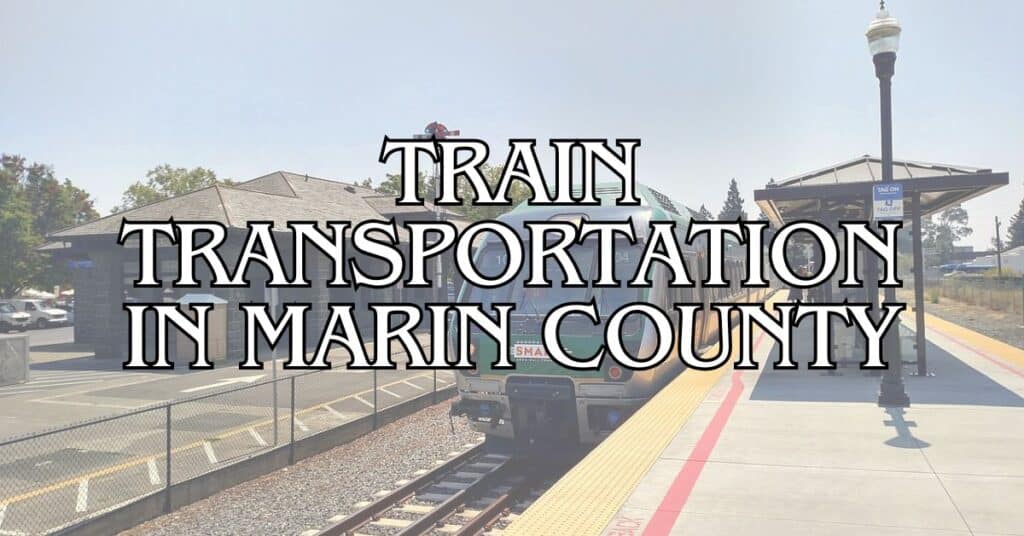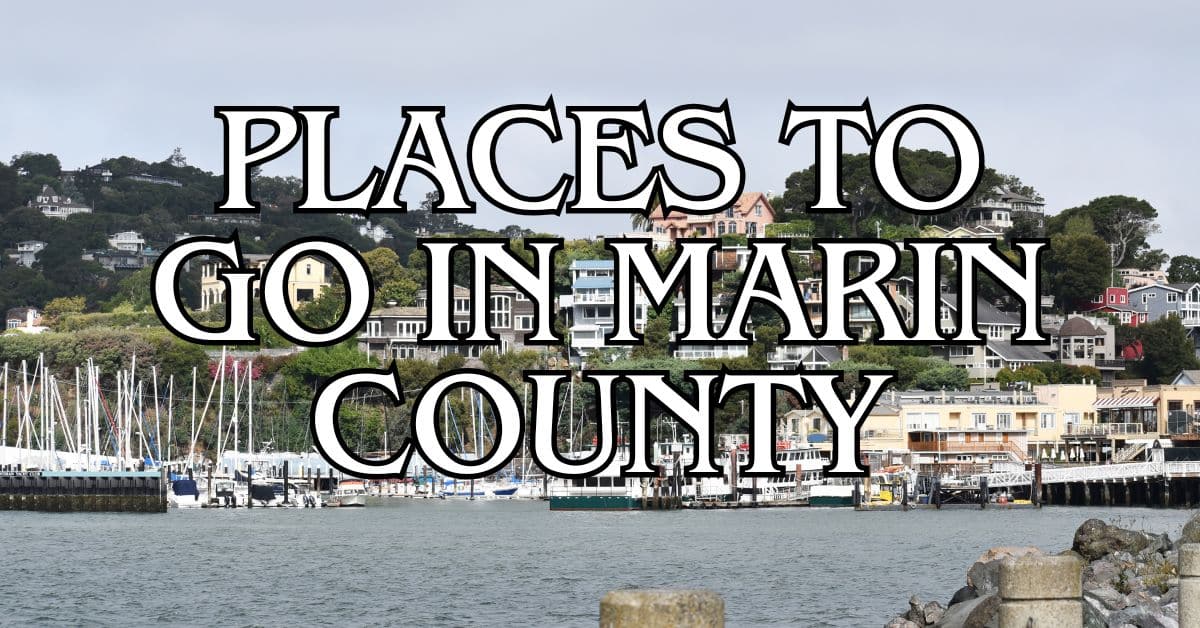Getting around Marin County just got a whole lot easier with the SMART train. This rail service links Larkspur to Santa Rosa, stopping at major spots throughout Marin. The SMART train gives you a break from Highway 101 traffic, letting you watch the scenery roll by instead of sitting in gridlock.
Trains run on weekdays with regular schedules for both commuters and visitors. It’s part of a bigger transportation puzzle in Marin, with Marin Transit buses rounding out your options. You really can explore the area without ever needing a car.
Discover hand-picked hotels and vacation homes tailored for every traveler. Skip booking fees and secure your dream stay today with real-time availability!
Browse Accommodations Now
Heads up if you’re visiting: the train sometimes skips service on certain holidays. There’s also a bicycle-pedestrian pathway running alongside parts of the tracks, perfect if you prefer to walk or ride. Having both the train and the pathway means you can mix and match your travel style to soak in Marin County’s stunning landscapes and neighborhoods.
Overview of Train Transportation in Marin County
Train transportation in Marin has changed a lot over the past few years, opening up new ways to get around for locals and visitors. The rail system now plays a key role in the region’s transportation network.
History and Development of Local Rail
Rail service in Marin County has a pretty tangled past. For decades, the rail corridor through Marin and Sonoma counties sat mostly unused for passengers—freight trains had the run of the tracks. Eventually, local leaders realized this old infrastructure could help with the ever-worsening Highway 101 traffic.
Back in 2008, voters in both counties approved funding for a new passenger rail. That move changed everything. Construction took a while (as these things do), with the usual headaches over budgets and delays. But by 2017, the first section opened, bringing passenger rail back to Marin after a long break.
Role of SMART in Regional Connectivity
The Sonoma-Marin Area Rail Transit (SMART) system now anchors train transportation in Marin County. SMART runs modern diesel trains connecting major towns and cities in both counties.
The line stretches from Larkspur in southern Marin up to the Sonoma County Airport, stopping at places like San Rafael, Novato, and Petaluma. The Larkspur station links up with the San Francisco Bay Ferry, making it pretty easy to get into the city.
Onboard, you’ll find free WiFi, bike storage, and accessible seating. People use the trains for all sorts of reasons—commuting, school, tourism, or just avoiding the 101.
SMART’s got its sights set on expanding north in Sonoma County. With $81 million in new funding, they’re planning to stretch out to about 70 miles of passenger rail.
SMART Train Service and Coverage
The SMART system connects communities across Marin and Sonoma with a modern passenger rail. Right now, it covers 43 miles, but there are plans to reach 70 miles soon.
Route and Major Stations
SMART’s route runs from Larkspur up to Sonoma County Airport. Major stops include San Rafael, Novato Downtown, Petaluma North, Cotati, Rohnert Park, and Santa Rosa Downtown.
Parking is available at most stations, and many connect with local buses. San Rafael stands out as a big transit hub, where you can hop onto Golden Gate Transit.
Trains run weekdays and weekends, with more frequent service during rush hours. Weekend schedules are a bit lighter, aimed at folks out exploring.
Larkspur Extension and Service to Sonoma County
The Larkspur extension, finished in December 2019, really boosted the system. Now, you can ride straight to the Larkspur Ferry Terminal and catch a boat to San Francisco.
In Sonoma County, the train serves communities like Petaluma, Cotati, Rohnert Park, and Santa Rosa. The Sonoma County Airport station connects air travelers via the SMART Connect shuttle.
More extensions are in the works—to Windsor, Healdsburg, and eventually Cloverdale. These additions will loop in even more northern Sonoma communities.
Find the perfect hotel or vacation rental. Instant booking, no fees!
View Top Stays
Passenger Demographics and Accessibility
SMART trains attract all kinds of riders: commuters, tourists, cyclists, and families. The system is especially popular with:
- Commuters between Marin and Sonoma
- Wine country visitors who’d rather not drive
- Cyclists who use the parallel bike path and bring bikes on board
All SMART trains are accessible for passengers with disabilities—level boarding, wheelchair spaces, and accessible restrooms are standard.
Seniors and youth get discounted fares, making trips affordable for families and older residents. Clipper cards work for payment, or you can grab tickets through the SMART app or at kiosks.
Fare Structure and Ticketing Options
If you’re riding trains in Marin, you’ll pay by the zone, and there are several ways to pay—plus discounts for different groups.
Fare System and Clipper Card
SMART uses a zone-based fare: $1.50 per zone traveled. They don’t accept cash on trains, so you’ll need to use:
- Clipper® card—works across Bay Area transit
- SMART mobile ticketing app—buy tickets on your phone
Ticket options include:
- One-way
- Day passes
- 31-day passes
You’ll need to buy a Clipper card and load it with value online or at retailers. It works for single trips or monthly passes.
Transfers between services in Marin are usually free, unless there’s some added value to the transfer.
Discounts for Youth and Seniors
SMART gives big fare breaks to several groups:
Youth (0-18): Ride completely free—no ticket needed. That’s a real perk for families and lets kids get around on their own.
Seniors (65+): Also ride free on SMART, making it a great option for older folks.
Persons with disabilities: Travel free as well, making the system more inclusive.
For Marin Transit buses, youth, seniors, and disabled riders pay $2.50 instead of the regular $5 adult fare.
These discounts make public transportation more doable for folks with fewer transportation options or tighter budgets.
Integration with Other Transportation Modes
Marin’s train system ties in with other transportation options, making it easier to get around without a car—even if your destination isn’t right on the rail line.
Buses and Multimodal Connectivity
Marin Transit runs bus services that sync up with SMART train schedules. Bus stops are close to most stations, so transfers are simple. The county’s worked to improve those “last mile connections” between transit stops and workplaces.
Some buses go straight to SMART stations, and schedules try to line up with train arrivals and departures. That helps cut down on waiting around.
Luxury stays to cozy cottages await, all with instant booking. Find the best deals!
Browse Marin Stays
There’s even a partnership with Uber in certain areas, filling in gaps where regular bus service doesn’t reach.
Transit upgrades like queue jump lanes and signal priority help buses move faster through traffic.
Bicycle and Pedestrian Pathways
The SMART rail corridor features a bike-pedestrian pathway running alongside the tracks in many places. This safe route gives cyclists and walkers a solid way to travel next to the rail line.
You can bring your bike on SMART trains—each car has bike storage. Or, leave your bike at the station using racks and lockers if you don’t want to haul it onboard.
Walking routes between stations and nearby destinations have gotten upgrades, too—better sidewalks, new crosswalks, that sort of thing.
Some stations even have bike share programs, giving you another way to cover that last stretch from the train to your destination.
Community Impact and Economic Benefits
Train transportation in Marin County has ripple effects throughout local communities. The SMART train’s become a fixture in daily life for many, connecting people and opening up new possibilities.
Commuting and Connectivity to Jobs
SMART gives workers a real alternative to Highway 101 traffic. It’s reliable, which helps people plan their days. You can work, read, or just relax during the ride—way better than staring at brake lights.
The Transportation Authority of Marin (TAM) says options like SMART help keep the region economically viable by linking workers to jobs. That’s especially important for service workers who might not own a car.
Some employers near stations now offer shuttles to help bridge the “last mile” between the train and the workplace.
Accessibility to Education Centers and Retail Hubs
SMART stations are close to key education and shopping spots. College of Marin students, for example, can take the train to class—no need to fight for parking.
Retail centers near stations have seen more foot traffic as commuters combine errands with their ride. San Rafael station makes it easy to check out downtown shops and restaurants.
For families, the train is an affordable way to get to parks, libraries, and youth programs on weekends. Kids and teens gain some independence, too.
With fewer cars on the road, it’s safer around schools and shopping areas—less competition for parking, fewer close calls.
Influence on Local Housing and Development
Train stations have sparked transit-oriented development in several Marin communities. New housing near stations helps with the county’s housing crunch and cuts down on car use.
With 24% of Marin residents spending over half their income on rent, transportation costs matter. Living near a train station can trim or even eliminate car expenses, making life a bit more affordable.
Businesses are starting to prefer locations near train stations. Some commercial properties nearby have seen more interest and higher occupancy.
Environmental benefits are part of the story, too. By encouraging development patterns that support public transit, communities can grow while shrinking greenhouse gas emissions and keeping Marin’s natural beauty intact.
Compliance and Safety Standards
Train transportation in Marin County follows strict guidelines to protect passengers and communities. Safety regulations and operational standards keep the rail system running reliably and safely.
Regulation by the Federal Railroad Administration
The Federal Railroad Administration (FRA) keeps an eye on train operations in Marin County, including the Sonoma-Marin Area Rail Transit (SMART). Every train car has to meet FRA safety standards, and SMART’s vehicles actually go a bit further with some extra safety features.
If you need to transport an oversized load across railroad tracks in Marin County, you’ll have to give the railroad company a heads-up—36 hours in advance, to be exact. That’s straight from Section 35789 of the transportation permit rules.
The FRA recently rolled out a rule that most train operations need at least two crewmembers. There are a few exceptions for one-person crews, but those are pretty specific. The idea here is to make rail systems safer overall.
SMART also has a Title VI Program and Nondiscrimination Policy. Basically, they’re making sure everyone gets equal access to the rail corridor and keeping up with the reporting requirements for transit providers.
Find available hotels and vacation homes instantly. No fees, best rates guaranteed!
Check Availability Now






